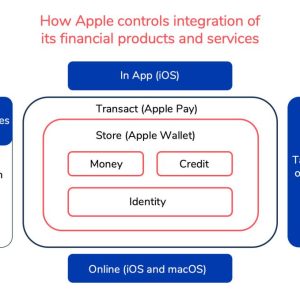
Have you ever wondered how large projects, such as building a new stadium or funding a new business venture, are financed? The answer often lies in a financial tool known as structured finance.
Editor’s Note: Our team of financial experts has been closely following the latest developments in structured finance, and we believe it’s a topic that deserves widespread attention. That’s why we’ve published this comprehensive guide to help you understand the ins and outs of structured finance and its significance in today’s financial landscape.
Through extensive analysis and research, we’ve compiled this structured finance guide to empower you with the knowledge you need to make informed decisions. Whether you’re a seasoned investor or just starting to explore the world of finance, this guide will provide valuable insights and help you navigate the complexities of structured finance.
Key Differences:
| Traditional Financing | Structured Finance | |
|---|---|---|
| Structure | Simpler, typically involves a single loan | Complex, involves multiple layers and investors |
| Risk | Higher risk for the borrower | Risk is distributed among multiple investors |
| Investors | Limited to banks or other traditional lenders | Wide range of investors, including institutional investors and hedge funds |
| Purpose | General financing needs | Specific financing needs, such as funding a project or securitizing assets |
Main Article Topics:
Structured Finance
Structured finance is a complex financial tool that has become increasingly important in recent years. It offers a number of advantages over traditional financing methods, making it an attractive option for a wide range of borrowers and investors.
- Securitization: The process of pooling and selling assets to investors in the form of securities.
- Tranching: The division of a pool of assets into different tranches, each with its own risk and return profile.
- Credit Enhancement: The use of techniques to improve the credit quality of a structured finance transaction, such as letters of credit and insurance.
- Asset-Backed Securities: Securities that are backed by a pool of assets, such as mortgages, auto loans, or credit card receivables.
- Collateralized Debt Obligations: Securities that are backed by a pool of corporate loans or bonds.
- Project Finance: The financing of a specific project, such as the construction of a new power plant or a new highway.
- Infrastructure Finance: The financing of infrastructure projects, such as roads, bridges, and airports.
- Private Equity: The investment of capital into privately held companies.
These are just a few of the key aspects of structured finance. By understanding these aspects, you can gain a better understanding of this complex financial tool and how it can be used to meet your financial goals.
Securitization
Securitization is a key component of structured finance. It allows banks and other financial institutions to pool and sell assets to investors in the form of securities. This process helps to distribute risk and raise capital, which can be used to fund new loans or investments.
Securitization has become increasingly important in recent years, as it has allowed banks to reduce their risk exposure and raise capital more efficiently. It has also made it possible for investors to access a wider range of investment opportunities.
There are many different types of assets that can be securitized, including mortgages, auto loans, credit card receivables, and corporate loans. Once these assets are pooled together, they are divided into different tranches, each with its own risk and return profile. Investors can then purchase tranches that match their risk tolerance and investment goals.
Securitization has a number of benefits, including:
- Risk diversification: Securitization allows banks to diversify their risk by selling off tranches of assets to investors.
- Capital raising: Securitization can help banks to raise capital more efficiently by selling off tranches of assets to investors.
- Increased liquidity: Securitization can increase the liquidity of assets by making them available to a wider range of investors.
- Access to new investment opportunities: Securitization can give investors access to a wider range of investment opportunities, including those that may not have been available to them before.
However, there are also some risks associated with securitization, including:
- Complexity: Securitization can be a complex process, and it is important for investors to understand the risks involved before investing in securitized products.
- Credit risk: The value of securitized products is dependent on the creditworthiness of the underlying assets. If the underlying assets default, the value of the securitized products could decline.
- Interest rate risk: The value of securitized products can be affected by interest rate changes. If interest rates rise, the value of securitized products could decline.
Overall, securitization is a powerful tool that can be used to distribute risk and raise capital. However, it is important for investors to understand the risks involved before investing in securitized products.
Tranching
Tranching is a key component of structured finance. It allows banks and other financial institutions to divide a pool of assets into different tranches, each with its own risk and return profile. This process helps to distribute risk and raise capital, which can be used to fund new loans or investments.
- Risk diversification: Tranching allows banks to diversify their risk by selling off tranches of assets to investors with different risk appetites.
- Capital raising: Tranching can help banks to raise capital more efficiently by selling off tranches of assets to investors.
- Increased liquidity: Tranching can increase the liquidity of assets by making them available to a wider range of investors.
- Access to new investment opportunities: Tranching can give investors access to a wider range of investment opportunities, including those that may not have been available to them before.
For example, a bank may securitize a pool of mortgages into different tranches, each with its own risk and return profile. The senior tranche would have the lowest risk and the highest return, while the junior tranche would have the highest risk and the lowest return. Investors can then purchase tranches that match their risk tolerance and investment goals.
Tranching is a powerful tool that can be used to distribute risk and raise capital. However, it is important for investors to understand the risks involved before investing in structured finance products.
Credit Enhancement
Credit enhancement is a key component of structured finance. It allows banks and other financial institutions to improve the credit quality of a structured finance transaction, which can make it more attractive to investors. There are a number of different credit enhancement techniques that can be used, including letters of credit, insurance, and guarantees.
- Letters of credit: A letter of credit is a commitment by a bank to pay a specified amount of money to a beneficiary if the borrower defaults on their obligation. This provides investors with a high degree of protection, as they are essentially guaranteed to receive their money back if the borrower defaults.
- Insurance: Insurance can be used to protect against a variety of risks, including the risk of default by the borrower. This can provide investors with peace of mind, as they know that their investment is protected in the event of a default.
- Guarantees: A guarantee is a promise by a third party to pay the obligation of the borrower if the borrower defaults. This can provide investors with additional protection, as they know that there is another party who is obligated to repay the debt if the borrower defaults.
Credit enhancement can be a valuable tool for banks and other financial institutions that are looking to raise capital through structured finance transactions. By using credit enhancement techniques, these institutions can make their transactions more attractive to investors, which can help them to raise capital more efficiently.
Asset-Backed Securities
Asset-backed securities (ABS) are a type of structured finance product that is backed by a pool of assets, such as mortgages, auto loans, or credit card receivables. ABS are created when a bank or other financial institution pools together a group of assets and sells them to investors in the form of securities. The investors receive interest payments on the securities, and the principal is repaid when the underlying assets mature.
ABS are an important component of structured finance because they allow banks and other financial institutions to raise capital by selling off assets that would otherwise be held on their balance sheets. This can free up capital that can be used to make new loans or investments. ABS also provide investors with a way to diversify their portfolios and earn a return on assets that they might not otherwise have access to.
There are many different types of ABS, each with its own unique risk and return profile. Some of the most common types of ABS include:
- Mortgage-backed securities (MBS): MBS are backed by a pool of mortgages. MBS are the most common type of ABS, and they are typically issued by government-sponsored enterprises (GSEs) such as Fannie Mae and Freddie Mac.
- Auto loan-backed securities (ABS): ABS are backed by a pool of auto loans. ABS are typically issued by banks and other financial institutions.
- Credit card-backed securities (ABS): ABS are backed by a pool of credit card receivables. ABS are typically issued by banks and other financial institutions.
ABS are a complex financial product, and it is important for investors to understand the risks involved before investing in them. However, ABS can be a valuable addition to a diversified portfolio, and they can provide investors with a way to earn a return on assets that they might not otherwise have access to.
Challenges
There are a number of challenges associated with ABS, including:
- Credit risk: The value of ABS is dependent on the creditworthiness of the underlying assets. If the underlying assets default, the value of the ABS could decline.
- Interest rate risk: The value of ABS is also affected by interest rate changes. If interest rates rise, the value of ABS could decline.
- Prepayment risk: The underlying assets in an ABS pool may be prepaid by the borrowers. This can reduce the value of the ABS, as the prepayments will reduce the amount of interest that is paid to investors.
Conclusion
ABS are a complex financial product, but they can be a valuable addition to a diversified portfolio. Investors should be aware of the risks involved before investing in ABS, but they can provide a way to earn a return on assets that might not otherwise be available to them.
Collateralized Debt Obligations
Collateralized debt obligations (CDOs) are a type of structured finance product that is backed by a pool of corporate loans or bonds. CDOs are created when a bank or other financial institution pools together a group of corporate loans or bonds and sells them to investors in the form of securities. The investors receive interest payments on the securities, and the principal is repaid when the underlying loans or bonds mature.
CDOs are an important component of structured finance because they allow banks and other financial institutions to raise capital by selling off assets that would otherwise be held on their balance sheets. This can free up capital that can be used to make new loans or investments. CDOs also provide investors with a way to diversify their portfolios and earn a return on assets that they might not otherwise have access to.
There are many different types of CDOs, each with its own unique risk and return profile. Some of the most common types of CDOs include:
- Cash flow CDOs: Cash flow CDOs are backed by a pool of cash-flowing assets, such as corporate loans or bonds. Cash flow CDOs are typically structured so that the interest payments on the securities are paid out to investors on a monthly or quarterly basis.
- Synthetic CDOs: Synthetic CDOs are backed by a portfolio of credit derivatives, such as credit default swaps. Synthetic CDOs are typically structured so that the interest payments on the securities are paid out to investors on a quarterly or annual basis.
CDOs are a complex financial product, and it is important for investors to understand the risks involved before investing in them. However, CDOs can be a valuable addition to a diversified portfolio, and they can provide investors with a way to earn a return on assets that they might not otherwise have access to.
Challenges
There are a number of challenges associated with CDOs, including:
- Credit risk: The value of CDOs is dependent on the creditworthiness of the underlying corporate loans or bonds. If the underlying assets default, the value of the CDO could decline.
- Interest rate risk: The value of CDOs is also affected by interest rate changes. If interest rates rise, the value of CDOs could decline.
- Prepayment risk: The underlying assets in a CDO pool may be prepaid by the borrowers. This can reduce the value of the CDO, as the prepayments will reduce the amount of interest that is paid to investors.
Conclusion
CDOs are a complex financial product, but they can be a valuable addition to a diversified portfolio. Investors should be aware of the risks involved before investing in CDOs, but they can provide a way to earn a return on assets that might not otherwise be available to them.
Project Finance
Project finance is a type of structured finance that is used to finance the construction and operation of a specific project. Project finance is typically used for large, complex projects that require a significant amount of capital, such as power plants, highways, and airports.Project finance is often used because it allows the project to be financed without recourse to the project sponsor’s balance sheet. This can be important for projects that are risky or that have a long payback period. Project finance also allows the project to raise capital from a wider range of investors, including institutional investors and private equity funds.There are a number of different types of project finance structures, but the most common structure is the non-recourse project finance structure. In a non-recourse project finance structure, the lenders have no recourse to the project sponsor’s balance sheet in the event of a default. This means that the lenders are only able to recover their investment from the cash flow generated by the project.Project finance is a complex and specialized area of finance. However, it can be a valuable tool for financing large, complex projects. Project finance can help to spread the risk of a project across a wider range of investors, and it can allow projects to be financed without recourse to the project sponsor’s balance sheet.
Importance of Project Finance as a Component of Structured Finance
Project finance is an important component of structured finance because it allows for the financing of large, complex projects that would not be possible to finance through traditional methods. Project finance also helps to distribute the risk of a project across a wider range of investors, which can make projects more attractive to investors.Real-Life Examples of Project Finance
There are many examples of project finance being used to finance large, complex projects around the world. Some of the most notable examples include:
- The construction of the Channel Tunnel, which connects England and France
- The construction of the Three Gorges Dam in China
- The construction of the Burj Khalifa in Dubai
- The construction of the London 2012 Olympic Games
Practical Significance of Understanding the Connection Between Project Finance and Structured Finance
Understanding the connection between project finance and structured finance is important for a number of reasons. First, it helps to explain how large, complex projects are financed. Second, it helps to identify the risks and rewards associated with project finance. Third, it helps to evaluate the feasibility of a project finance transaction.
Infrastructure Finance
Infrastructure finance is a type of structured finance that is used to finance the construction and operation of infrastructure projects. Infrastructure finance is typically used for large, complex projects that require a significant amount of capital, such as roads, bridges, and airports.
Infrastructure finance is often used because it allows the project to be financed without recourse to the project sponsor’s balance sheet. This can be important for projects that are risky or that have a long payback period. Infrastructure finance also allows the project to raise capital from a wider range of investors, including institutional investors and private equity funds.
There are a number of different types of infrastructure finance structures, but the most common structure is the non-recourse project finance structure. In a non-recourse project finance structure, the lenders have no recourse to the project sponsor’s balance sheet in the event of a default. This means that the lenders are only able to recover their investment from the cash flow generated by the project.
Infrastructure finance is a complex and specialized area of finance. However, it can be a valuable tool for financing large, complex infrastructure projects. Infrastructure finance can help to spread the risk of a project across a wider range of investors, and it can allow projects to be financed without recourse to the project sponsor’s balance sheet.
Importance of Infrastructure Finance as a Component of Structured Finance
Infrastructure finance is an important component of structured finance because it allows for the financing of large, complex infrastructure projects that would not be possible to finance through traditional methods. Infrastructure finance also helps to distribute the risk of a project across a wider range of investors, which can make projects more attractive to investors.
Real-Life Examples of Infrastructure Finance
There are many examples of infrastructure finance being used to finance large, complex infrastructure projects around the world. Some of the most notable examples include:
- The construction of the Channel Tunnel, which connects England and France
- The construction of the Three Gorges Dam in China
- The construction of the Burj Khalifa in Dubai
- The construction of the London 2012 Olympic Games
Practical Significance of Understanding the Connection Between Infrastructure Finance and Structured Finance
Understanding the connection between infrastructure finance and structured finance is important for a number of reasons. First, it helps to explain how large, complex infrastructure projects are financed. Second, it helps to identify the risks and rewards associated with infrastructure finance. Third, it helps to evaluate the feasibility of an infrastructure finance transaction.
Private Equity
Private equity is a type of structured finance that involves the investment of capital into privately held companies. Private equity firms typically invest in companies that are not publicly traded, and they typically hold their investments for a period of several years before selling them. Private equity can be used to finance a variety of different types of companies, including start-ups, growth companies, and distressed companies.
Private equity is an important component of structured finance because it provides a source of capital for companies that may not be able to access capital from traditional sources, such as banks or public markets. Private equity can also help to improve the efficiency of companies by providing them with access to management expertise and financial resources.
There are a number of different types of private equity funds, each with its own unique investment strategy. Some of the most common types of private equity funds include:
- Buyout funds: Buyout funds invest in companies that are already profitable and have a strong track record of growth. Buyout funds typically acquire a majority stake in the companies they invest in, and they typically hold their investments for a period of several years before selling them.
- Growth funds: Growth funds invest in companies that are in a rapid growth phase. Growth funds typically take a minority stake in the companies they invest in, and they typically hold their investments for a period of several years before selling them.
- Venture capital funds: Venture capital funds invest in early-stage companies that have the potential for high growth. Venture capital funds typically take a minority stake in the companies they invest in, and they typically hold their investments for a period of several years before selling them.
Private equity can be a complex and specialized area of finance. However, it can be a valuable tool for investors who are looking for a way to generate high returns. Private equity can also help to diversify an investment portfolio and reduce risk.
Challenges
There are a number of challenges associated with private equity, including:
- High fees: Private equity funds typically charge high fees, which can eat into returns.
- Lack of liquidity: Private equity investments are typically illiquid, which means that investors may not be able to access their money quickly if they need it.
- Risk: Private equity investments are typically risky, and investors may lose money if the companies they invest in do not perform well.
Conclusion
Private equity is a complex and specialized area of finance, but it can be a valuable tool for investors who are looking for a way to generate high returns. Private equity can also help to diversify an investment portfolio and reduce risk. However, investors should be aware of the challenges associated with private equity before investing.
Frequently Asked Questions about Structured Finance
Structured finance is a complex and multifaceted financial tool that can be used to finance a wide range of projects and investments. However, it can also be a complex and confusing topic for those who are not familiar with it. To help shed some light on structured finance, we have compiled a list of frequently asked questions (FAQs) and their answers.
Question 1: What is structured finance?
Answer: Structured finance is a type of financial transaction that involves the pooling of assets and the issuance of securities that are backed by those assets. This allows investors to diversify their risk and gain exposure to a wider range of investments.
Question 2: What are the different types of structured finance products?
Answer: There are many different types of structured finance products, including asset-backed securities, collateralized debt obligations, and project finance. Each type of product has its own unique risk and return profile.
Question 3: How are structured finance products rated?
Answer: Structured finance products are typically rated by credit rating agencies, such as Moody’s and Standard & Poor’s. The ratings are based on the creditworthiness of the underlying assets and the structure of the transaction.
Question 4: What are the benefits of investing in structured finance products?
Answer: There are several benefits to investing in structured finance products, including diversification, income generation, and potential for capital appreciation.
Question 5: What are the risks of investing in structured finance products?
Answer: There are also some risks associated with investing in structured finance products, including credit risk, interest rate risk, and liquidity risk.
Question 6: How can I invest in structured finance products?
Answer: There are several ways to invest in structured finance products, including through mutual funds, exchange-traded funds (ETFs), and private placements.
Summary of key takeaways or final thought:
Structured finance is a complex and multifaceted financial tool that can be used to finance a wide range of projects and investments. While there are some risks associated with investing in structured finance products, there are also several potential benefits. Investors who are considering investing in structured finance products should carefully consider their investment goals and risk tolerance before making a decision.
Transition to the next article section:
Structured Finance Tips
Structured finance is a powerful tool that can be used to finance a wide range of projects and investments. However, it can also be a complex and risky undertaking. By following these tips, you can help to mitigate the risks and maximize the benefits of structured finance.
Tip 1: Understand the risks. Before investing in any structured finance product, it is important to understand the risks involved. These risks can include credit risk, interest rate risk, and liquidity risk.
Tip 2: Do your research. Before investing in any structured finance product, it is important to do your research and understand the underlying assets and the structure of the transaction.
Tip 3: Get professional advice. If you are not familiar with structured finance, it is important to get professional advice from a qualified financial advisor.
Tip 4: Diversify your investments. Do not put all of your eggs in one basket. Diversify your investments across a range of different structured finance products and asset classes.
Tip 5: Invest for the long term. Structured finance products are typically long-term investments. Be prepared to hold your investments for several years before you see a return.
Summary of key takeaways or benefits:
By following these tips, you can help to mitigate the risks and maximize the benefits of structured finance.
Transition to the article’s conclusion:
Structured finance can be a complex and risky undertaking, but it can also be a powerful tool for investors who are looking to diversify their portfolios and generate income.
Conclusion
Structured finance is a complex and multifaceted financial tool that can be used to finance a wide range of projects and investments. While there are some risks associated with investing in structured finance products, there are also several potential benefits. Investors who are considering investing in structured finance products should carefully consider their investment goals and risk tolerance before making a decision.
Structured finance is likely to continue to play an important role in the financial markets in the years to come. As the world becomes increasingly complex and interconnected, the need for innovative financial tools will only grow. Structured finance can provide investors with a way to access a wider range of investments and generate income in a variety of different market conditions.
Youtube Video:






